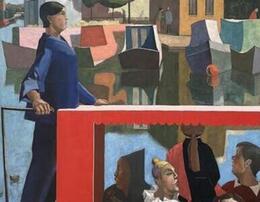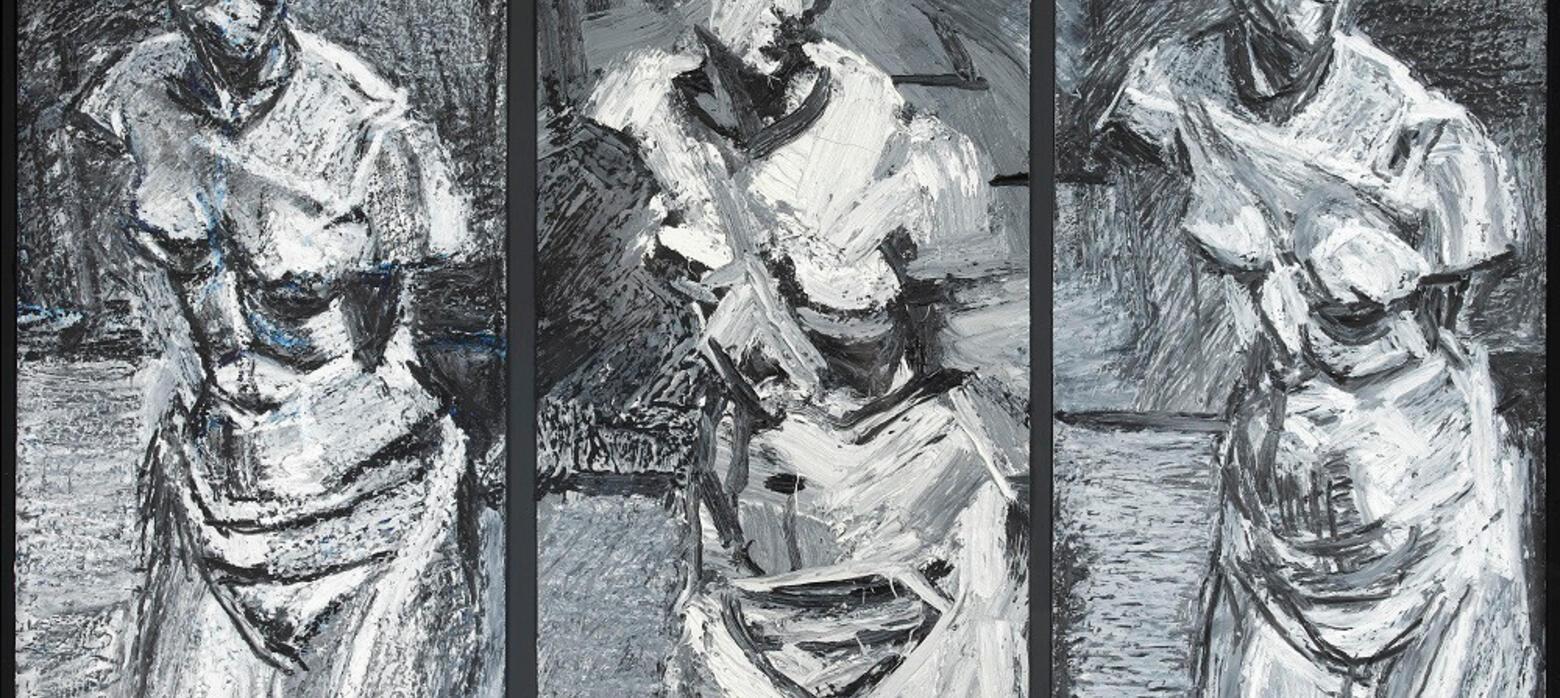Catching Mice: An Interview with Peter Clossick NEAC
/ New English Art Club
Peter Clossick NEAC talks about his influences to Lucy Cox of The Aura of Abstraction
Lucy Cox: You grew up in post-war London. What was your life like during this time, and could you recall your earliest memories of the city’s art galleries?
Peter Clossick: London, where I lived during my early childhood, particularly Kings Cross, Somers Town and Camden Town, was full of bombsites. Like many children, I played in them and later realised that they were the forerunners of adventure playgrounds. For the first four years of my life, I lived with my brother and parents in two rooms, with a gas stove on the landing and a toilet two floors down. I did not come from a position of privilege but have lived through free and privileged times.
Art galleries were not on the agenda during early childhood. Instead, it is more the business of day-to-day living. My cockney mother worked as a cleaner in the mornings whilst my Irish father worked six days a week on building sites and garages. One day I visited Tate Britain by myself. Blown away by Ivon Hitchens and David Bomberg, I thought, “I can do that.”
LC: Why did you decide to become an artist?
PC: I am not sure it is a decision you make, to be an artist, but something you have to prove to yourself. From an early age, I realised that play and imagination, rather than academia, were my best strengths. Perhaps it is a cliché, but, as a young child, I frequently lost myself in childish scribbles; drawing became a means of escape. So, creativity was my best hope for the future. Initially, I never considered this a career, but more an area of life in which I found myself.
LC: In the early 1960s, you attended evening life drawing classes at the Working Men’s College. Could you discuss your experiences and how drawing, particularly in the traditional sense, became fundamental to your practice?
PC: At fourteen, I had run away to Ireland and, after being picked up by the Gardaí and shipped back home, expelled from my catholic grammar school for moral turpitude. I was desperate to find my own space away from the crowded council flat, where I lived with my family, and the Working Men’s College happened to be close by.
I remember visiting the college’s beautiful Victorian studio for the first time; the smell of oil paint was like coming home. Although I was underage to join the life drawing classes, the elderly tutor, who had possibly trained under the likes of Henry Tonks at the Slade School of Fine Art, took me under his wing. The college provided an old fashioned art education whereby drawing and painting from the subject was the norm. Before I even started to question the meaning of drawing and painting, this traditional approach has stayed with me as the bedrock of practice. At the same time, some Royal College of Art students, through whom I became aware of the advent of Pop Art and Op Art, invited me to attend some of their classes. However, I was taught no knowledge of line, tone, colour and perspective, and wanted to learn more about visual language.

Op Art Study by Peter Clossick, 1963. Image courtesy of the artist.
LC: Which artists were you looking at during this time, David Bomberg, and the School of London painters?
PC: Those influences on my work came much later. Initially, I attended Leicester Polytechnic to study shoe design. After being rejected for a foundation course at London’s Central College, having no support or private funding, to make a living I decided on commercial design. This was the mid-1960s; therefore an exciting time to be young and fashion was king. Whilst working at a design studio above Browns, on South Molton Street, I became a successful shoe designer. Then, in my early 20s, I reverted to my original desire to study fine art and attended Camberwell School of Art, where the Bomstream ideology took hold of me. I developed an interest in Frank Auerbach and other painters within the School of London. The Human Clay exhibition, organised by R.B. Kitaj, also had a significant impact on my practice. Although I had dabbled in abstraction and other experimentations, over time, I knew figuration was where I wanted to be as it suited my thought processes.

Peter Clossick’s shoe designs, 1966. Image courtesy of the artist.

Abstract painting by Peter Clossick, 1978. Image courtesy of the artist.
LC: Why was The Human Clay exhibition important to you?
PC: In 1976, The Human Clay reinforced my desire to work from the human body and explore figurative language and its psychological implications.
Similarly, the 1984 exhibition Hard-Won Image also gave me the confidence to pursue a traditional direction. For me, it reflected contemporary art going back to basics. Art is about drawing from life, a characteristic that had become irrelevant. I thought the modernist narrative of ‘new-ism’ had played itself out. Undoubtedly, we were at a watershed moment, similar to the Mannerist period between Renaissance and Baroque, re-iterating the tropes of early modernism. By then, I realised that I was not interested in radical politics or opportunist irony as entertainment. Most obscure conceptualism can be discussed endlessly with art speak. As George Orwell wrote, obfuscation is ‘a cuttlefish spurting out ink’. Having already rejected the fashion world for what I regarded as a more serious engagement with my life, art as fashion had passed me by.
Portrait of Mother Asleep by Leon Kossoff, 1963, oil on board. Kossoff was one of six artists who exhibited in The Human Clay. Image: Mitchell-Innes & Nash.

Painting by Peter Clossick, Camberwell School of Art, 1974. Image courtesy of the artist.
LC: How do you begin a painting?
PC: I could say the beginning of any painting is on the back of one’s previous failure and is very subjective. Any picture is a journey into the unknown; everything I do is an experiment toward this end. I do not regard myself as a jobbing artist, making a product. Fundamentally, I believe in drawing in all its forms. My particular style is from the body and the Zen idea that the only changeless thing is change. My visual perception is in post-existential theory, from philosophers like Maurice Merleau-Ponty, who believed that we could not meet in the world in the middle, with Cartesian duality. I do not see any separation between mind and body; the world looks back and mirrors me. Self-construction is always in the moment and forever changing.
Head Study by Peter Clossick. Charcoal and chalk on paper, 67 x 50 cm. Image: Cotswold Contemporary

Mirror Mirror by Peter Clossick. Oil on canvas on board, 2016, 80 x 68 cm. Image courtesy of the artist.
LC: How do you stay motivated?
PC: Motivation is never a problem. Creativity poses too many questions, for which I do not have answers; the engagement with the act of painting and not knowing the outcome is forever entertaining. My motivation is curiosity. By not creating a work of art solely to sell a product or treating it as a means to an end, the activity becomes my form of total freedom. I make the rules and set the parameters.
LC: Do you have a favourite painting of yours?
PC: Some works of art have become markers along the way. The best practice is not necessarily the most recent. To make any judgements about what I produce, I need distance. For example, Goya’s painting The Dog became a subconscious influence on my work. In the early 1980s, Frank Auerbach’s model, Joan Yardley-Mills––‘JYM’ for short––sat for me as a friend over several years. Only years later did I make the connection with Goya’s painting through the broadly similar composition. They say originality must have an origin. Art history is significant to me, from prehistoric cultures to the present day.
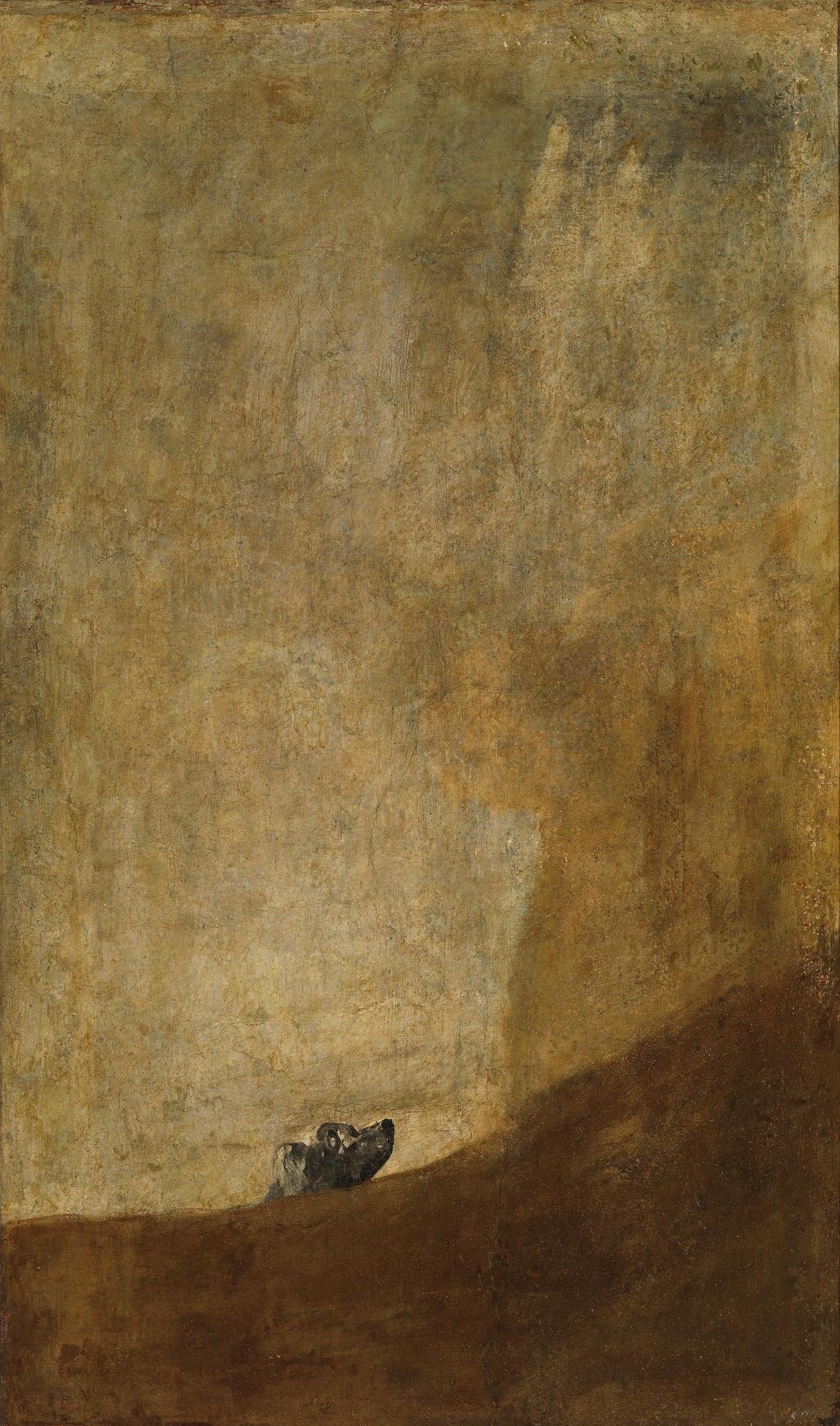

Goya’s The Dog 1819–1823. Oil mural on plaster transferred to canvas. Image: Wikipedia.
JYM (After Goya) by Peter Clossick, 1983. Image courtesy of the artist.
LC: Which other historical paintings are essential to your practice?
PC: Three obvious favourites are Rembrandt, Titian, and Goya at the National Gallery. When my daughter was born, I drew Giovanni Bellini’s Madonna of the Meadow, probably reflective of my catholic upbringing, as was Titian’s The Tribute Money. One of my biggest thrills was having an actual Rembrandt etching (loaned!), which I copied. Later, by drawing Goya’s Portrait of Doña Antonia Zárate, I noticed the compositional stability of a triangle within the rectangle. Picasso once said artists should steal, not borrow.

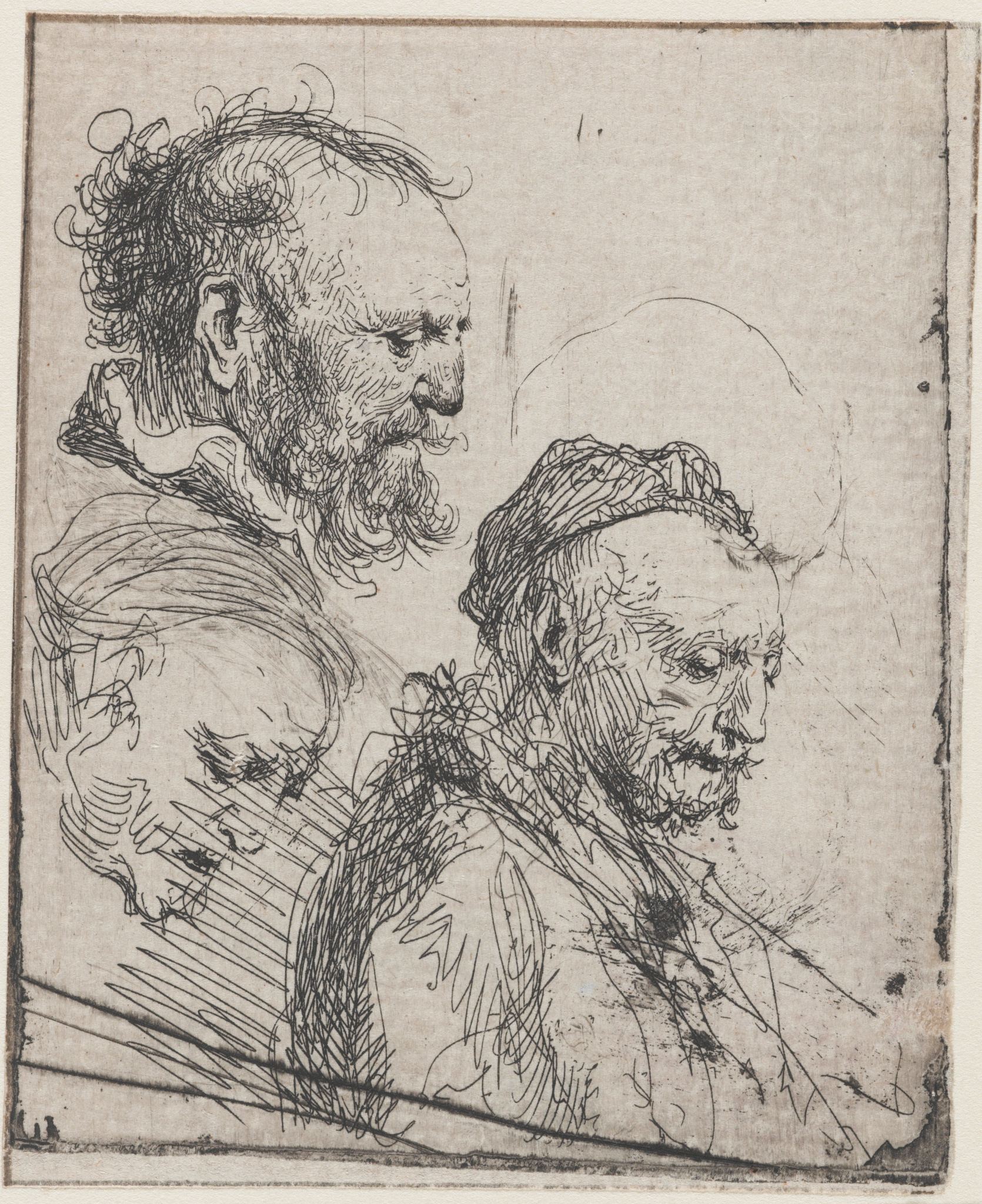
Three Studies of Old Men’s Heads (After Rembrandt) by Peter Clossick. Image courtesy of the artist.
Three Studies of Old Men’s Heads by Rembrandt, 1630. Image: Wikipedia.
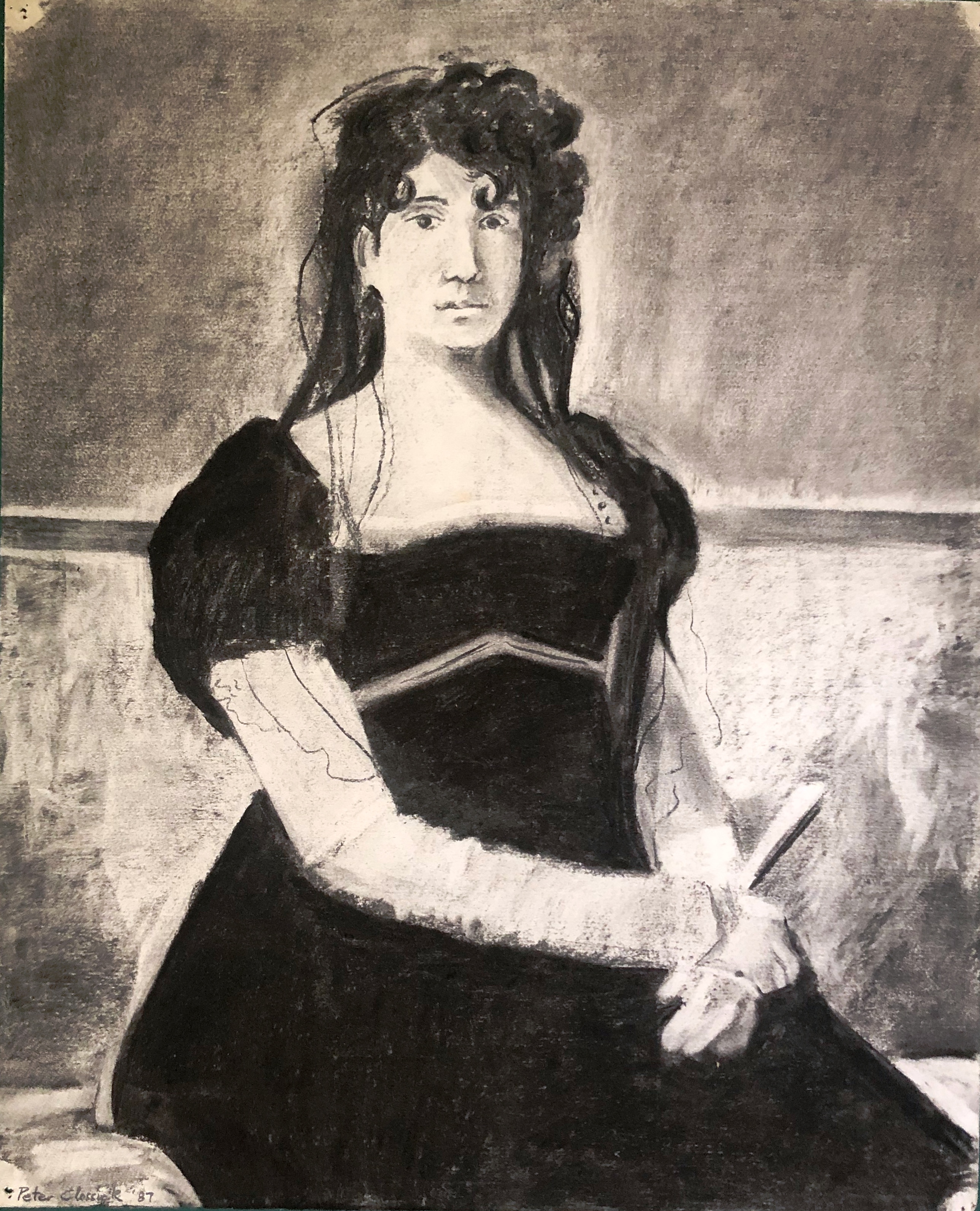
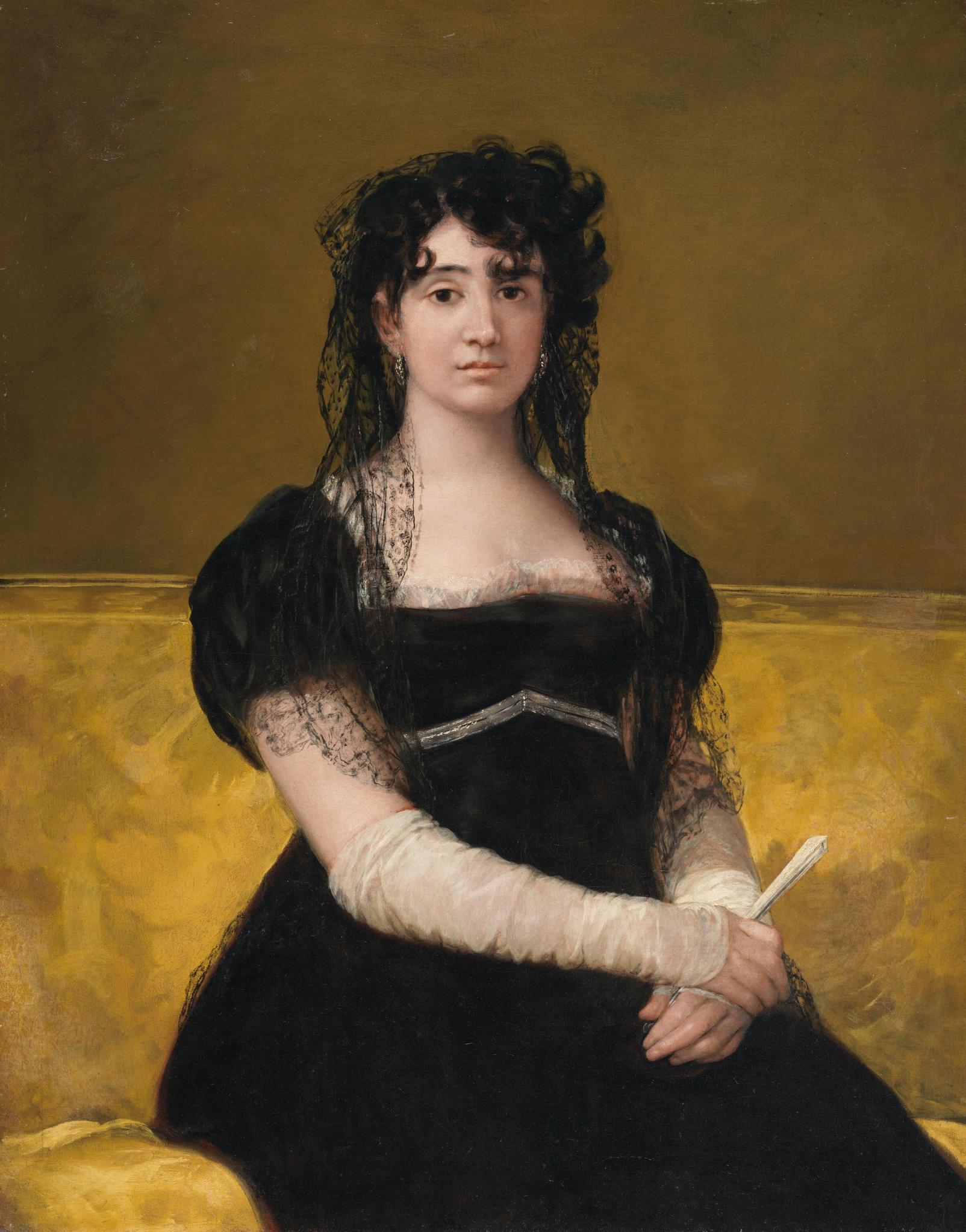
Portrait of Doña Antonia Zárate (After Goya) by Peter Clossick, charcoal on paper. Image courtesy of the artist.
Portrait of Doña Antonia Zárate by Goya, 1805. Image: Wikipedia.
To learn, I observe other works and ideas and find digging through the past more fertile than contemporary art. I could name a long list of historical paintings and sculptures that have influenced me, from ancient to modern: my initial surprise at seeing Rubens’ painting, Descent from the Cross (such a vast scale!), and Holbein’s The Ambassadors, wondering how the human mind conceived such works; Van Gogh; Giacometti; Etruscan votive figures; Cycladic sculptures. They are all influential. I have a full-size plaster copy of the Venus de’ Medici in my studio (the original copy dates back to 1st-century BCE), a source of endless inspiration, which measures the distance between then and now. I love history.
Venus de’ Medici Triptych by Peter Clossick, 2017. Oil pastel and paint on paper, 118 x 86 cm. Image: Felix and Spear.
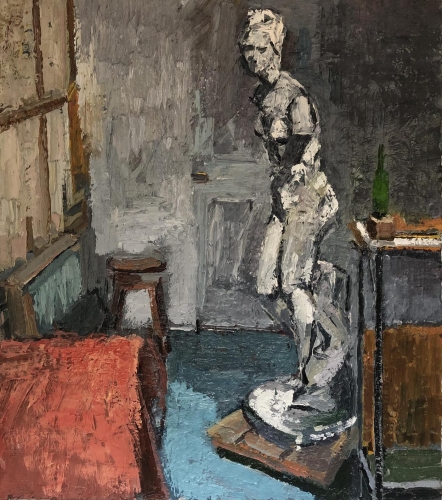
Lockdown Studio by Peter Clossick, 2020. Image: The New English Art Club.
LC: You have been making art for over fifty years. Have you ever been discouraged? If so, how did it affect your creativity?
PC: Being an artist in our capitalist-driven world, you learn to accept rejection and roll with the punches. When I was a boy, I received a medal for ABA boxing. Boxing taught me not to be frightened of defeat; it is all part of the contest. As someone once said, the art world is hugely competitive, with too many artists and not enough crumbs on the table. Over time you develop a thick skin, so much so that the only real judge is yourself.
LC: What are the components of truthful painting?
PC: Some artists use a two-dimensional surface with marks, shapes, colours, tones, and lines, all of which construct a visual language. These constructions, used for multiple purposes, can be read in various ways. We express verbal, written and musical communication through linear time, and visual language happens simultaneously. You know instinctively if you are lying, doing a cover-up job, or gilding the lily. So ‘truthful’ painting is purely subjective and cannot be proven rationally, except what it feels like through communication. It is not a claim to be better than others, only a way of thinking through painting. As Willem de Kooning said, when you see two people kneeling in church, we do not know if one is praying and the other is working out the shopping list. Jackson Pollock commented to de Kooning, “you know more, I feel more.” How can that be proven? Yet we know what he means.
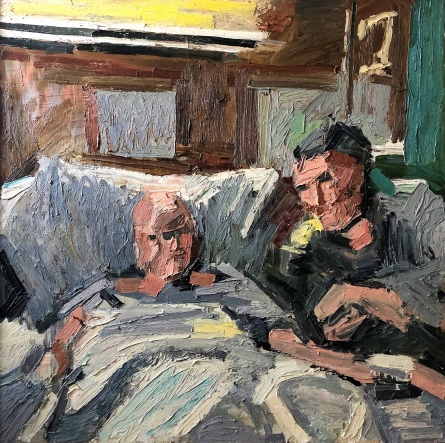
The Last Few Days by Peter Clossick, 2019. Oil on board, 127 x 127 cm. Image: The New English Art Club.
LC: What is the best advice you have received?
PC: It is not advice that some sage artist has given me, but a two-word Chinese proverb that says ‘perseverance furthers’, which I read analogous for life, from birth to death. Another saying appeals to me for its rationality: ‘Matters little if it’s a black cat or a white cat, as long as it catches mice’.
Peter Clossick NEAC studied at Camberwell School of Art and Goldsmiths College. He regularly exhibits nationally and internationally. Clossick is a member and the Past President of The London Group, an artist collective established in 1913, and a member of The New English Art Club.
You can see Clossick's work in the New English Art Club Annual Exhibition from 25 June to 3 July
Discover more of Peter Clossick's work
This interview originally appeared on theauraofabstraction.com
